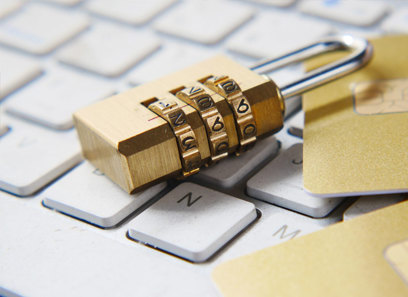The Next Evolution of Business Driven by Transaction Advisory Trends
Wiki Article
Why Every Company Needs a Solid Cybersecurity Advisory 2025 Strategy
In 2025, organizations deal with a swiftly evolving cyber threat landscape. The elegance of attacks, driven by improvements in technology, demands a strong cybersecurity advisory approach. This approach not just improves danger analysis yet likewise cultivates a society of protection recognition amongst employees. As essential framework becomes increasingly vulnerable, the demand for aggressive actions comes to be clear. What steps should organizations take to ensure their defenses are robust adequate to stand up to these challenges?The Evolving Cyber Hazard Landscape
As cyber risks proceed to advance, companies need to continue to be alert in adjusting their safety measures. The landscape of cyber dangers is noted by raising sophistication, with foes utilizing advanced techniques such as artificial intelligence and machine understanding to manipulate susceptabilities. Ransomware attacks have actually risen, targeting crucial framework and demanding hefty ransoms, while phishing plans have actually become much more deceitful, usually bypassing traditional safety protocols.In addition, the rise of the Net of Things (IoT) has actually broadened the attack surface, presenting new entry factors for cybercriminals. Organizations face tests not only from exterior dangers but additionally from expert dangers, as staff members may accidentally endanger delicate information. To efficiently deal with these evolving hazards, companies must prioritize aggressive methods, consisting of regular updates to their safety and security infrastructure and continuous staff member training. By remaining notified regarding the newest patterns in cyber dangers, organizations can much better secure their assets and keep resilience in an increasingly hostile electronic setting.
The Relevance of Danger Assessment
Understanding the importance of danger analysis is essential for organizations intending to fortify their cybersecurity posture. A comprehensive danger evaluation identifies vulnerabilities and prospective hazards, making it possible for companies to prioritize their resources effectively. By assessing the probability and influence of various cyber dangers, companies can make informed decisions regarding their security steps.Additionally, risk assessments help companies recognize their compliance commitments and the lawful ramifications of information violations. They supply understandings right into the company's present safety and security techniques and emphasize locations needing enhancement. This positive strategy promotes a culture of security recognition amongst employees, encouraging them to recognize and report potential threats.
Performing routine danger analyses makes certain that organizations remain agile in attending to arising hazards in the dynamic cyber landscape. Eventually, a robust risk analysis procedure is instrumental in creating a customized cybersecurity technique that aligns with organizational objectives while guarding critical properties.
Proactive Measures for Cyber Defense
Applying positive actions for cyber defense is vital for organizations seeking to alleviate possible dangers prior to they rise. A comprehensive cybersecurity technique ought to include normal susceptability analyses and infiltration screening to identify weaknesses in systems. By conducting these analyses, organizations can address susceptabilities before they are manipulated by harmful actors.In addition, continuous tracking of networks and systems is important. This entails utilizing advanced threat detection technologies that can recognize unusual task in real-time, enabling speedy feedbacks to potential intrusions. Furthermore, worker training on cybersecurity best methods is vital, as human mistake commonly offers considerable risks. Organizations needs to promote a society of safety awareness, making certain that workers understand their role in shielding delicate info.
Lastly, developing an occurrence feedback plan allows organizations to respond effectively to breaches, reducing damages and recuperation time. By implementing these positive actions, companies can substantially boost their cyber protection position and safeguard their electronic possessions.
Enhancing Remote Job Security
While the change to remote job has actually supplied flexibility and convenience, it has actually likewise presented significant cybersecurity challenges that companies must deal with. To boost remote work safety, firms require to implement durable protection protocols that protect delicate data. This consists of using online personal networks (VPNs) to encrypt internet links, making certain that employees can access company resources securely.Furthermore, companies ought to mandate multi-factor verification (MFA) to add an additional layer of security for remote accessibility - M&A Outlook 2025. Normal training sessions for workers on determining phishing attempts and keeping protected methods are also vital
Organizations need to conduct regular safety assessments to identify susceptabilities in their remote work facilities. By taking on these methods, organizations can effectively mitigate risks related to remote work, shielding both their information and their credibility. Emphasizing a culture of cybersecurity understanding will certainly better encourage employees to add to a protected remote workplace.
Leveraging Cloud Technologies Safely
A growing variety of organizations are migrating to shadow technologies to improve functional efficiency and scalability, yet this shift likewise necessitates rigorous safety procedures. Properly leveraging cloud solutions needs a comprehensive understanding of prospective vulnerabilities and risks associated with shared atmospheres. Organizations ought to apply solid access controls, making sure that just accredited workers can access delicate data. File encryption of information both en route and at remainder is important to protecting information from unauthorized accessibility.Routine audits and tracking can help determine anomalies and possible dangers, enabling organizations to respond proactively. Additionally, adopting a multi-cloud approach can minimize dependence on a single service provider, possibly lessening the impact of breaches. Worker training on cloud safety best techniques is important to cultivate a security-aware society. By incorporating these steps right into their cloud strategy, organizations can harness the benefits of cloud modern technologies while mitigating protection threats efficiently.
Preserving Consumer Count On and Credibility
Exactly how can organizations ensure that consumer trust and track record continue to be intact in a significantly digital landscape? To accomplish this, organizations must prioritize openness and positive interaction. By plainly outlining their cybersecurity actions and immediately resolving any type of prospective violations, they can foster a culture of depend on. Regularly updating consumers regarding safety protocols and possible dangers shows a commitment to safeguarding their information.Additionally, organizations need to purchase detailed cybersecurity training for workers, making sure that every person comprehends their role in safeguarding consumer info. Executing durable protection procedures, such as multi-factor authentication and file encryption, additional reinforces the company's devotion to preserving client trust.
Moreover, gathering and acting upon client feedback relating to safety techniques can enhance relationships. By being responsive and flexible to client concerns, companies not just safeguard their reputation yet additionally enhance their trustworthiness in the market. Hence, an unwavering concentrate on cybersecurity is important for maintaining consumer count on.
Ensuring Regulatory Compliance and Legal Defense

A strong cybersecurity advising technique helps companies recognize appropriate regulations, such as GDPR, HIPAA, and CCPA, and apply essential steps to abide by them. This technique not just makes certain compliance yet also improves lawful protection against possible breaches and abuse of information.
Furthermore, organizations can gain from regular audits and analyses to review their cybersecurity posture and identify susceptabilities. By fostering a society of compliance and continual enhancement, organizations can alleviate threats and show their dedication to protecting delicate details. Ultimately, purchasing a durable cybersecurity method improves both regulatory compliance and lawful defense, securing the company's future.
Regularly Asked Concerns

How Can Organizations Identify Their Certain Cybersecurity Needs?
Organizations can determine their certain cybersecurity demands by performing risk analyses, evaluating existing safety and security measures, evaluating prospective risks, and involving with stakeholders to recognize susceptabilities, inevitably developing a tailored method to attend to special challenges.What Budget plan Should Be Assigned for Cybersecurity Advisory Providers?

Exactly How Typically Should Cybersecurity Techniques Be Upgraded?
Cybersecurity methods ought to be updated a minimum of yearly, along with after considerable incidents or modifications in innovation (ERC Updates). Normal reviews ensure effectiveness versus advancing hazards and compliance with governing demands, Transaction Advisory Trends keeping organizational strength versus cyber risksWhat Credentials Should a Cybersecurity Expert Possess?
A cybersecurity advisor need to have pertinent accreditations, such as copyright or CISM, extensive experience in risk administration, knowledge of compliance laws, strong analytical skills, and the capability to connect complicated concepts properly to diverse audiences.Exactly How Can Organizations Measure the Efficiency of Their Cybersecurity Technique?
Organizations can determine the performance of their cybersecurity technique via normal audits, checking event feedback times, examining danger knowledge, conducting staff member training analyses, and assessing compliance with industry standards and guidelines to make sure continual enhancement.Report this wiki page